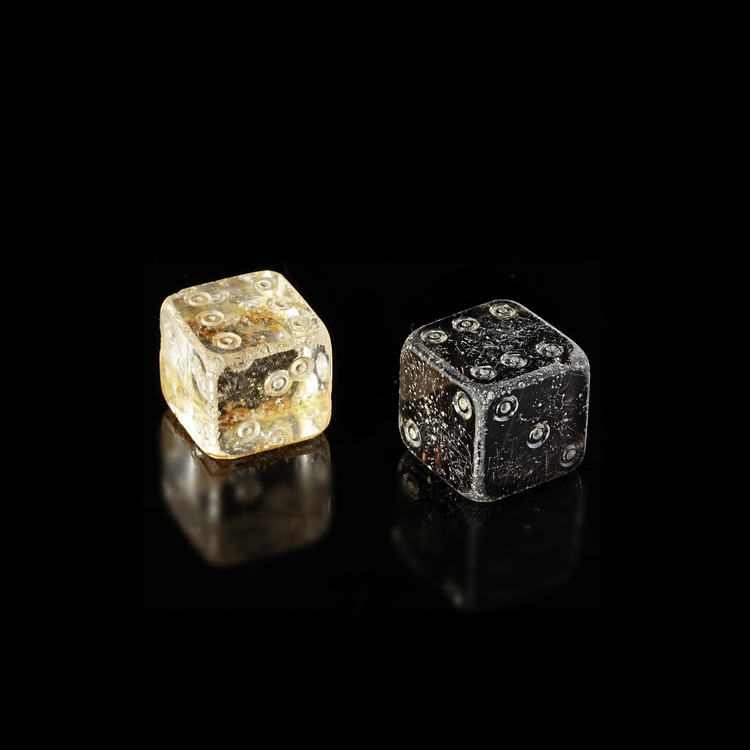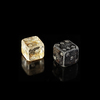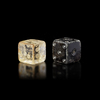Lot 213 TWO CUBIC DICE: BLACK STONE, ROCK CRYSTAL, EAST PERSIA, 9TH–12TH CENTURY
These two cubic dice, dating from the 9th to 12th century and originating from the eastern regions of Persia, exemplify the refined craftsmanship and material sophistication of the Islamic world during the early medieval period. Made from rock crystal and black stone—materials associated with both luxury and durability—the dice reflect the visual contrast and symbolic duality commonly found in Islamic art, similar to the aesthetic seen in carved chess pieces of the same era.
The numeric values on each face are marked using incised dots and concentric circular motifs, executed with precision. This style of marking was not only practical but also aligned with the geometric and abstract preferences of Islamic art, which generally avoided figural representation in secular objects. The use of dots arranged in conventional patterns (1 through 6) followed the established traditions of dice design that had been passed down from earlier Indian and Greco-Roman models, but with regional stylistic modifications.
In eastern Persia during this time, artisans often employed fine engraving techniques on hard materials such as rock crystal, agate, and stone. The incised dots—often created with a small drill or burin—demonstrate a high level of control and symmetry. The presence of circular motifs surrounding or accenting the dots suggests a localized decorative adaptation, possibly influenced by Seljuk and Samanid artistic tastes, where geometry and repetition played significant roles.
Furthermore, the rounded edges seen on the dice were likely the result of both aesthetic preference and practical use, ensuring smooth rolling. These physical characteristics not only enhanced gameplay but also aligned with broader design trends in utilitarian luxury objects of the period.
Dimensions: 1 1.4 cm³



